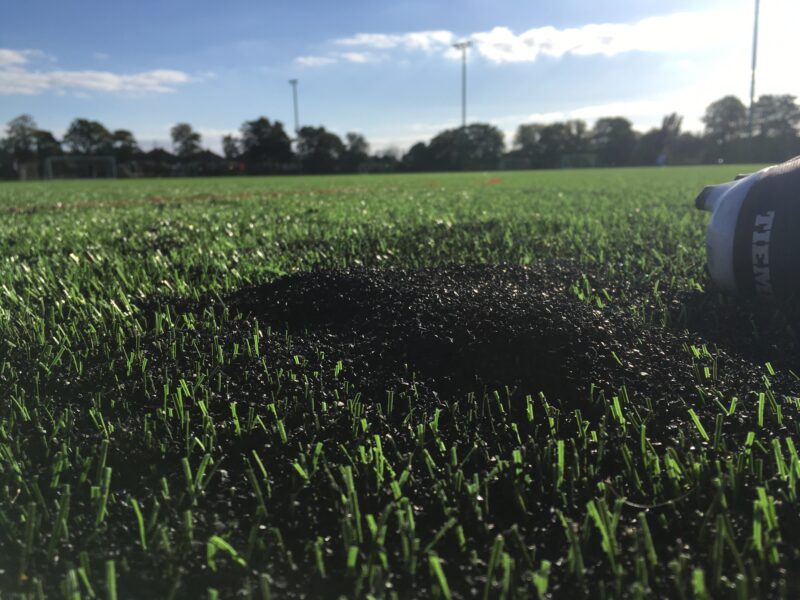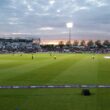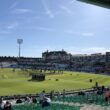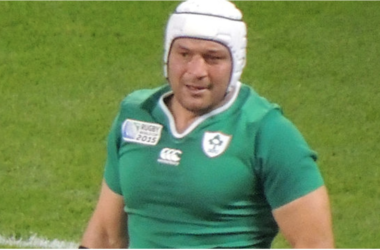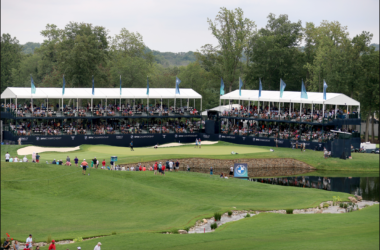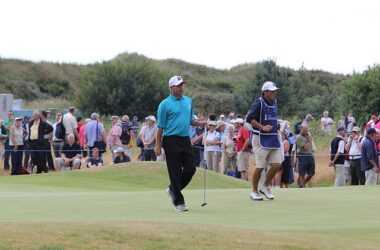In 2013, Saracens made a landmark move from Bramley Road to the Allianz Park, where they would become the first Premiership rugby side to play on an artificial grass pitch (AGP).
Their new pitch, which cost approximately £500,000 to build, is available all year round and can host a variety of events without the fear that the playing surface could get damaged.
The cost benefits that Saracens have received from playing on an artificial surface compared to a grass pitch have set a precedent for many other clubs around England who have followed suit in laying AGPs.
The Rugby Football Union website reports that there are approximately 167 AGPs in England used for rugby union, while Premiership clubs, Gloucester, Newcastle and Worcester have all joined Saracens in laying AGPs at their home grounds.
Embed from Getty ImagesBut a ‘turf war’ has emerged at the top level of the game, with many players expressing concerns over the injuries that they are sustaining on artificial playing surfaces.
The nature of the sport means injuries are commonplace in rugby union but while these athletes are aware of the risks they face, some have called for a ban on the use of AGPs at the professional level due to the severity of the cuts, abrasions and muscle injuries being sustained.
Harlequins prop Joe Marler recently took to Twitter to express his concerns over AGPs which received likes and support from other professional players, including Henry Slade.
— Henry Slade (@Sladey_10) September 20, 2021
While Wasps Scrum Half, Dan Robson, Exeter winger Jack Nowell and London Irish Hooker Augustin Creevy have also posted much more graphic images of the burns they have experienced from the pitches.
On a positive note, that was the last 4G we play on this season 😂🤦🏼♂️ pic.twitter.com/jYDZJJLQOz
— Dan Robson (@d_jrobson) May 15, 2022
What do the players really think?
Former professional rugby league player Harvey Burnett concurred that artificial pitches do cause some nasty cuts but spoke more of the shock and muscle injuries that can be sustained when players go from playing on grass pitches to an AGP.
Burnett said: “4G pitches are faster as the surface holds up underfoot but that also makes it way tougher on the muscles.
“Joints and tendons are strained a lot more in my opinion as there is no give in the surface. Landing on artificial pitches is also harder than on soft pitches as it always grazes your skin.
“People who don’t play on artificial pitches usually cramp quicker when using them and vice versa when you go from an AGP to a muddy pitch. So there is such a thing as a home-field advantage with them.
“Overall though, they are a good thing for maintaining fixtures and guaranteeing a good playing surface, so long as they’re well maintained. But they are tougher on the body.”
Embed from Getty ImagesBurnett, who played for Bradford Bulls and Oxford RLFC, isn’t the first to raise the issue that players can experience shock damage from artificial pitches.
In February, Bristol head coach Pat Lam also expressed similar concerns claiming that several of his team have suffered severe muscle, bone and tendon injuries during the season from playing on AGPs.
The RFU’s findings on artificial pitches
Back in June, the RFU released the England Professional Rugby Injury Surveillance Project (PRISP), which was carried out during the 2020-2021 season.
As part of the RFU’s commitment to help make the game safer for all players, this report analyses injury data being collected from matches occurring around England and reports that there is no difference in the incidence or severity of match injuries being sustained on AGPs and normal grass surfaces.
Interestingly though, the report does claim that the injuries sustained on AGPs generally tend to take six days longer to heal than those sustained on grass pitches.
That does present a problem for many professionals who suffer these cuts but have to play again in another six days’ time, meaning that their wounds will struggle to heal and can re-open.
Embed from Getty ImagesIn a statement, the RFU said: “AGPs supplement good quality natural turf pitches by providing playing, training and education facilities with a consistent surface throughout the year upon which the game can develop.
“To ensure AGPs meet required World Rugby standards, they must meet designated technical details. For player welfare and health and safety reasons, all artificial grass pitches that are used for contact rugby union must be tested upon installation and then retested every two years in order to comply with regulations.”
Snow on the pitch at Allianz Park, but within minutes the tractor starts to brush it away. pic.twitter.com/WjyKmpfI
— Saracens Rugby Club (@Saracens) January 21, 2013
So are artificial pitches here to stay?
While the data released by the PRISP report seems to suggest that AGPs will be here to stay, players have started taking measures to protect themselves after World Rugby changed the law to allow male players to wear tights.
This ruling was initiated by former Northampton Saints second-row and head of player affairs at the RPA, Christian Day, who lobbied World Rugby to allow players to wear leggings.
Day said: “While that’s not the complete answer, it gives players the option and it is quite nice to see a number of players taking that option. It is a bit of mitigation we’ve managed to get for our members and all players.
Embed from Getty Images“Those friction burns don’t tend to prevent players from playing; they’re like a time-loss injury and are an unfortunate side effect of playing on these pitches. They are something we felt strongly that we had to try and do something about.
“For the most part, players are pretty happy playing on them, they actually feel pretty good on them because they’re so quick, they’re almost kind of springy and the players quite like the feel of playing on them.”
Embed from Getty ImagesWhile Day wasn’t totally convinced artificial pitches were problematic, he did express concern over the amount of time it takes players to fully recover from an abrasion sustained on an AGP.
He said: “We want our members to stay fit and healthy and have the longest careers they can.
“If you were playing on an artificial pitch it might take you six days longer to recover. That isn’t significant enough as yet to tear down trees or indeed tear up the pitches. But it is certainly a cause for concern and is something that we will increasingly look into.
“I am particularly interested in injuries involving direct turf interaction, so foot, ankle, toe and knee. If we see those injury rates going up, incidents going up and severity going up, then I think we have a pretty strong position, to start saying ‘we don’t want our members to play on these surfaces’. But as yet, that data isn’t pronounced enough to make that call.
Embed from Getty Images“I will add, these pitches are brilliant for the community game. They allow games to happen in the middle of winter that wouldn’t do otherwise, so they definitely do have some positives, but from our perspective, as the professional players union we will be keeping a close eye on that injury data via the PRISP report.”
These thoughts have been echoed across a number of other sports, with Claygate Casuals Football Club manager Luke Sheavyn stating while there is nothing quite like playing on a grass pitch, artificial pitches can always be used even in adverse weather conditions.
Sheavyn said: “I would say that if I had a preference of a good grass pitch or a 4G pitch then I would definitely pick a grass pitch for two reasons.
“The main being that I think the ball runs truer on a good grass pitch and I think a good footballing possession-based team will enjoy it as my perception is that a 4G pitch can sometimes be a bit slower as the grass length can seem longer.
Embed from Getty Images“The other positive is that people have grown up playing on grass pitches and that it’s what they are used too.
“The positives of artificial surfaces though are that you can guarantee that games are always on and most 4G pitches give you a seven or an eight out of 10 surface every week, whereas grass pitches can sometimes be a three or a four.”
It seems the jury’s still out on whether AGPs should be used at elite rugby union, and perhaps as Day suggests, we need to see more data showing injury rates going up before we can start thinking about questioning their use.



